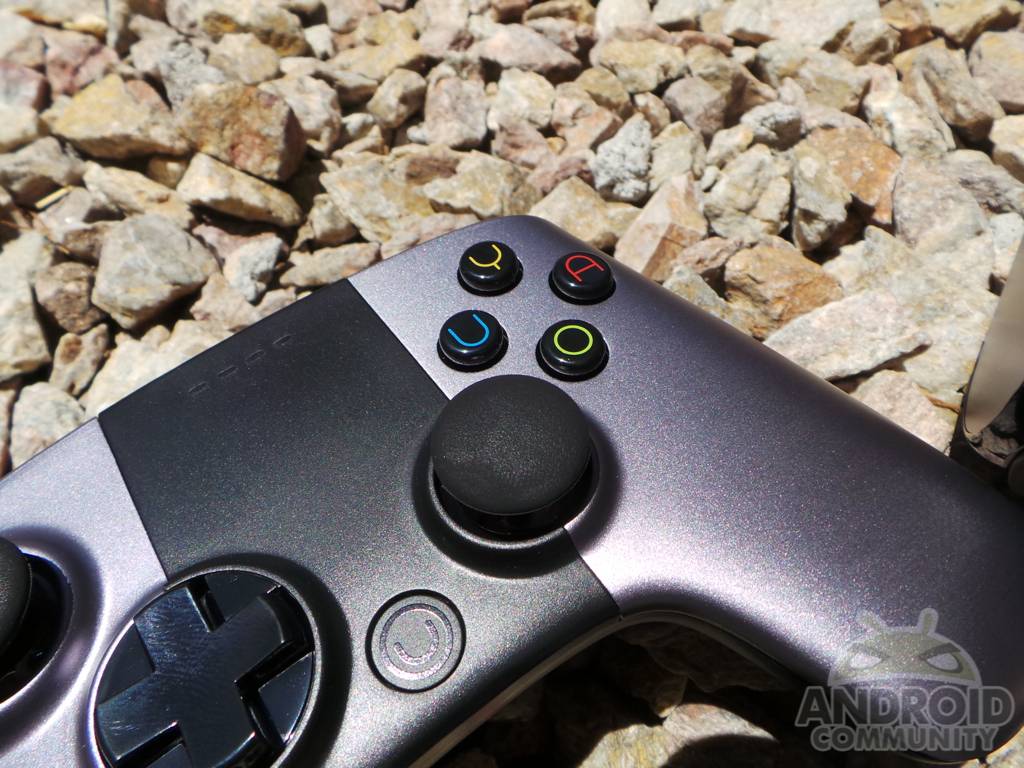
Our living rooms and bedrooms are dominated by Microsoft and Sony with the Xbox and Playstation, but OUYA is aiming to change that. The $99 Android-powered game console fits in the palm of your hand, runs an NVIDIA Tegra 3 quad-core processor, and is loaded with Android games and ports to take over your gaming. Or can it? Being the most successful crowd-funded device from Kickstarter to date, we’re taking a closer look at the OUYA Game Console.
OUYA set out with a mission. To offer a $99 game console and thousands of games that will hopefully take over living rooms, and dorm rooms everywhere. After passing its $950,000 goal and getting all the way past $8 million, surely it has a lot to live up to. Gamers and indie developers alike loved the idea, and now it’s here. After months of delays, redesigns on the controller and more it finally hit retail stores in June, and we decided it was finally time to check it out.
Now the OUYA has been available for a little while, not to mention backers received theirs some time ago, so we won’t be getting too crazy here. However, we wanted to take the approach of this being a $99 Android device that is geared for games, but can be tweaked to do a few other things as well. For the price, no one will rival Microsoft or the PS3, but it can still be fun and worth the price. Read on to see what we thought.
Console
The OUYA is rather tiny. It comes in roughly the size of an apple, or a fist, but packs plenty of hardware inside. It’s basically a Tegra 3 powered smartphone without the 5-inch screen or phone capabilities, in a way. It has a nice lightweight aluminum design, rounded edges on bottom, and is about 3 inches from each side-to-side and slightly taller. We’ll talk more about the controllers below.
It is simple. You have some ports to make it an actual device with power and displaying video out, and everything else is inside. Right out of the box it looks nice, feels pretty durable, and has a beautifully etched OUYA logo on the front. Sadly ours came with a broken rubber foot on bottom (came out of holes) and didn’t sit flat on a table. I guess for $99 the quality control might not be top-tier, but that didn’t cause any issues, so we’ll carry on.
This little box has a nice power button up top with a soft glow when powered on, some venting on the bottom, the branding, some etched backers being promoted, and all the ports. Front is the OUYA logo, and the back has all the important stuff. A power port, Ethernet, HDMI-out, micro-USB, and a full-size USB 2.0 as well. Then of course we have the console which supports Bluetooth 4.0 and WiFi. Here’s a quick look.
Inside we have a quad-core 1.7 GHz NVIDIA Tegra 3 processor, 1GB of RAM, 8GB of internal storage, and all those WiFi and Bluetooth options mentioned above. There’s also a small fan for when she gets hot, which is the only way you can tell it is turned on sometimes, aside from the small light up top.
It certainly doesn’t have the power of a 360 or PS3, but should play nearly every Android game with ease, and indie developers have quite a bit to work with. Not to mention it’s a pretty efficient little home theater once you upload XBMC to stream video, but more on that below. Now lets talk about the controller.
Controller
The OUYA controller is a bit odd. It’s a firm mix between an Xbox and a PS4. We have the usual layout, triggers, bumpers, analog sticks and D-pad. It’s a little flat, and the top bumpers aren’t quite as easy to hit as we thought they’d be. To be honest the controllers feel extremely cheap, but then again, this entire package is just $99.
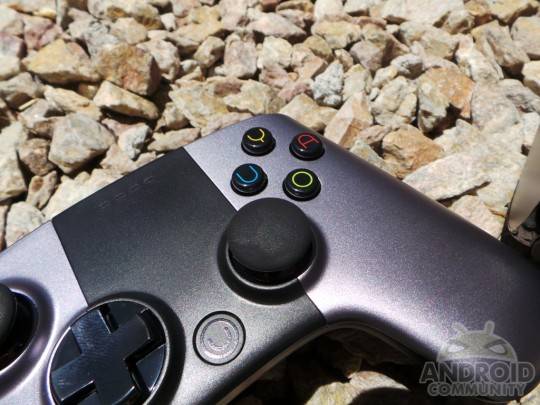
The sides wiggle off and can be removed (and customized) and also house the area for a AA battery on each side. When we opened the box one side was actually loose and bouncing around inside the box, but didn’t damage anything. It’s a similar layout to the Xbox, but the buttons are swapped out for O,U,Y,A instead of the usual. The A acts like the B for most things, and will take you back. While you can use Bluetooth to use an xbox controller, the $49 additional OUYA controllers might make more sense. For the fact that they sync best, buttons are labeled correct, and if you want to do anything aside from regular gaming you’ll want the touch-pad in between the analog sticks. Yes it has one that acts as a mouse at times.
Buttons. Ughh. Just like many reviews I’ve read the buttons are awful, all of them. The d-pad is clunky, sticky, and hard to hit. The buttons are squishy in a bad way and don’t have any real tactile response you’d hope for. Sometimes you push hard enough, and other times you don’t. You’ll get use to pouncing on these controls, that’s for sure. Which makes us worry about longevity given the price. So far they’ve held up well.
Oh, and if you get stuck in a game and there’s no way out (because the console doesn’t tell you) a quick double tap on the circle with the U in it (also the power button) will take you back to the main menu. This took me a minute to figure out, and sadly there wasn’t any tips on that part. Oops!

There’s 4 LED lights on top that help when syncing, and also alerting the user what player or controller number he is. Below those is that small touchpad we mentioned, which is hard to use at times, but we’re glad it’s there to make navigating easier since the experience isn’t fluid throughout. Sometimes buttons work, sometimes they don’t and that touchpad comes in handy.
The controllers look and feel cheap, and in practice are pretty cheap too, but for $99 we can’t really complain. Can we? It’s a toss up, but for the price this should keep users and kids entertained, and it won’t spy on you like the Xbox One.
User Interface
The overall user interface is quite beautiful and well made. It runs on Android 4.1.2 Jelly Bean at the moment, but you’d never notice unless you went digging. It was almost always smooth and stable, had no noticeable lag (although occasionally it would while downloading a big game) and overall we enjoyed it. Here’s a video preview instead of us trying to explain the UI.
As you can see we have Play, Discover, Make, and Manage for options. It’s simple, easy to understand and navigate, and there’s no way you’ll get confused and not understand. Before we continue on the interface we must mention set up. It was a nightmare. We heard of issues on opening day, and hoped it would be smooth this much later, but it wasn’t. The server took forever to try and make an account, eventually our WiFi dropped, and then you’ll have to slowly and cumbersomely enter all your information all over again. Pouncing on the D-pad to enter passwords takes far too long, and I did it 5 times before it finally worked.
Once you’ve signed in and got a WiFi connection (unless you’re using Ethernet) you’ll have an update waiting. Mine took about 15 minutes and a few more to install, so nothing too bad. However, once we booted up again we lost WiFi and had to power cycle to get it back. For whatever reason they have some work to do in the WiFi stability area. That’s for darn sure.

The only thing we didn’t like about the interface, which we mention in the video, was the lack of information and pricing. It was easy to find a game, learn more details, and see screenshots, but there’s no video previews. Then, you can download (sadly only one at a time) games and start playing. However, many cost money, but they don’t tell you that. It’s after you download it there’s a demo version, and then you’ll pay to unlock it. There’s no way around this, and we wish the prices were listed somewhere.
Everyone can put their games on OUYA, and that’s both a pro and a con. Many are fun and free, but many cost money. It’s in the hands of the developers, so indie devs will love it. While we hated not seeing prices, a good game demo will make you wanna buy. That’s the cold hard truth. If my attention was dropped, I’ll quickly uninstall it and move on. Another issue was download times. 35MB games took upwards of 5-8 minutes, when they realistically should take under 30 seconds. At least with my internet speeds. Their servers were slow, but we managed to do ok.
Games
To be honest the OUYA isn’t about hardware, software, or the price. It’s about gaming. While the hardware is cheap and the user interface isn’t perfect, the games will win this device over. Everything else can be improved in time (well, except for hardware) and the OS updates and improved games will continue to arrive. We’ve had a mixed experience, but so far love the potential.
Well over 100 games were available at launch, and there’s more than 200 available now. Many are low quality, but then you have ShadowGun (you all should know that game by now) Final Fantasy III (for $15.99 ouch) then a few OUYA exclusives. We found a few hidden gems that were worth playing though.
Amazing Frog was stupid fun, but very unpolished an needs some work, and there’s a few other popular Android titles too. Canabalt was a blast on the OUYA, Shadowgun was the same experience we’ve loved for over a year, and Bards Tale is a classic RPG game you won’t want to miss.
Sadly while the gaming experience was fun, at the same time there’s nothing really compelling to make us purchase this device. Not yet at least. There’s no stand-out titles, nothing exclusive that’s worth jumping in the air over. It really was a bit underwhelming to be completely honest.
Of course gaming is a huge aspect of this device, but it isn’t everything. Using the usual methods you can side-load apps, it just isn’t a task for the average user. We quickly added Dropbox to side-load apps with ease, put on Netflix to watch some shows, and of course the XBMC to make the OUYA even more worth that price tag.
Wrap-Up
Hmm. The OUYA has tons of potential, and we love where it’s headed. Sadly, it just isn’t quite there, and might not ever make it. The entire device and experience still feels like a beta product. Even though it’s currently being sold in stores and widely available. Really, the best way to describe it is you’ll be getting a beta product that doesn’t feel finished or polished.
Yes the UI is much improved from a few months ago, there’s a few more games, and more are coming. It just isn’t a compelling enough product to warrant the purchase, yet. Hopefully round two for OUYA we’ll have improved hardware, and more game developers of higher quality will be on board.
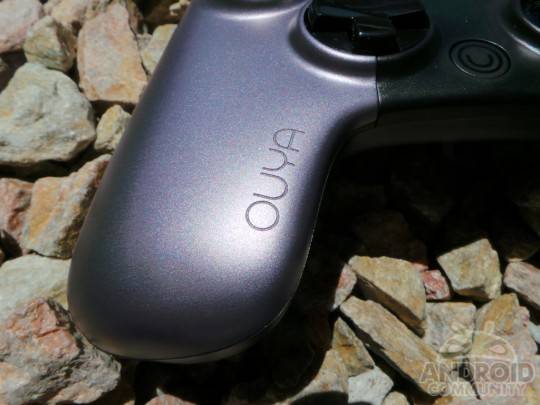
This is obviously about the games, not the hardware, and in that aspect it both succeeds and fails. The experience is unique, fun, and cheap enough that the family or kids can enjoy it, and warrants the purchase for many. However, those expecting something finely tuned and an actual “retail product” will be sorely disappointed. This is still the early days, no doubt, and we have a feeling better things are coming soon.
The OUYA Console is available on Amazon and at Best Buy, and hopefully more games arrive this summer and as the year continues. I really want to recommend it for the options, openness, and fun, but we’re having a hard time doing so. We’ll see how things look in a few more months.


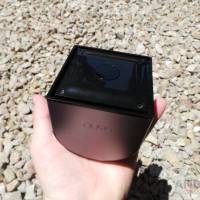
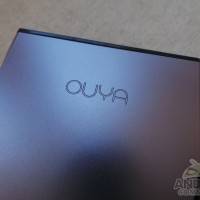
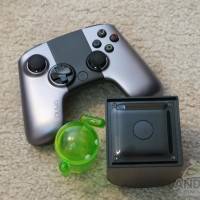
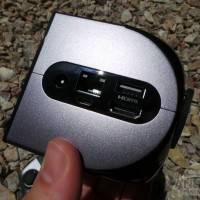
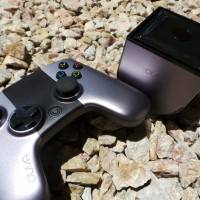
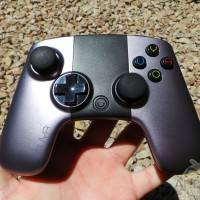
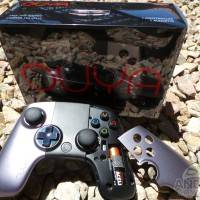

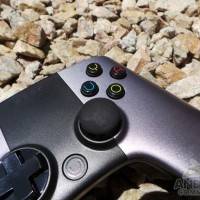

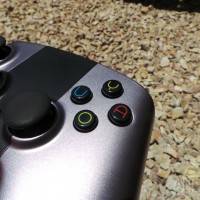
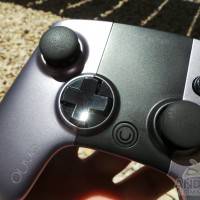
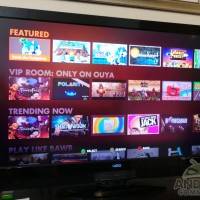
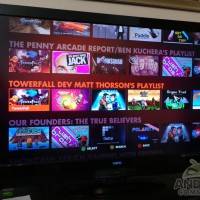
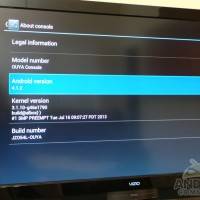
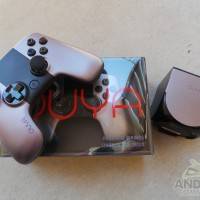
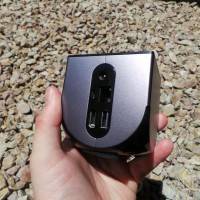
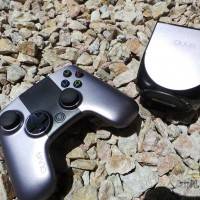
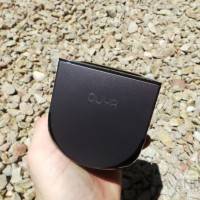
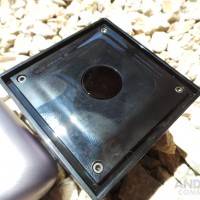
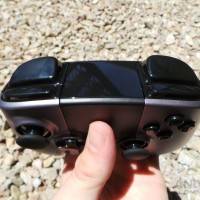
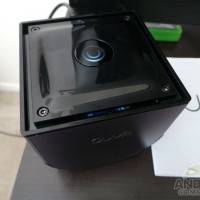


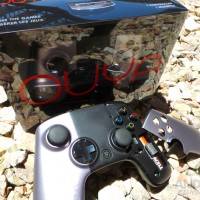








Holy $hit. I had no idea about the trackpad until I read this! Saved me going out and buying a Bluetooth mouse just for the ouya lol
I bought one for literally one use case: XBMC. So glad I did too. Before we were using my old laptop as our XBMC client for our apartment’s TV. It couldn’t play most 1080p videos very consistently, and after the last Ubuntu upgrade, it was having some stuttering issues from time to time. Not to mention it was loud and ran hot, and wasn’t setup for a multi-user environment.
Got the Ouya, hooked it up, put XBMC on it, configured it to pull videos from our NFS shares on everyone’s computers. Boom. Plays almost all 1080p videos we’ve throw at it (only super-high quality, beyond Blu-ray type videos have lag), runs quiet, and with the controller, anyone can pick it up and start a movie. It’s just down-right awesome.
I’d say it’s easily worth the 100 bucks, as a cheap and efficient mini-XBMC client.
Unpolished and feels like a beta. Kind of like the Wii-U.